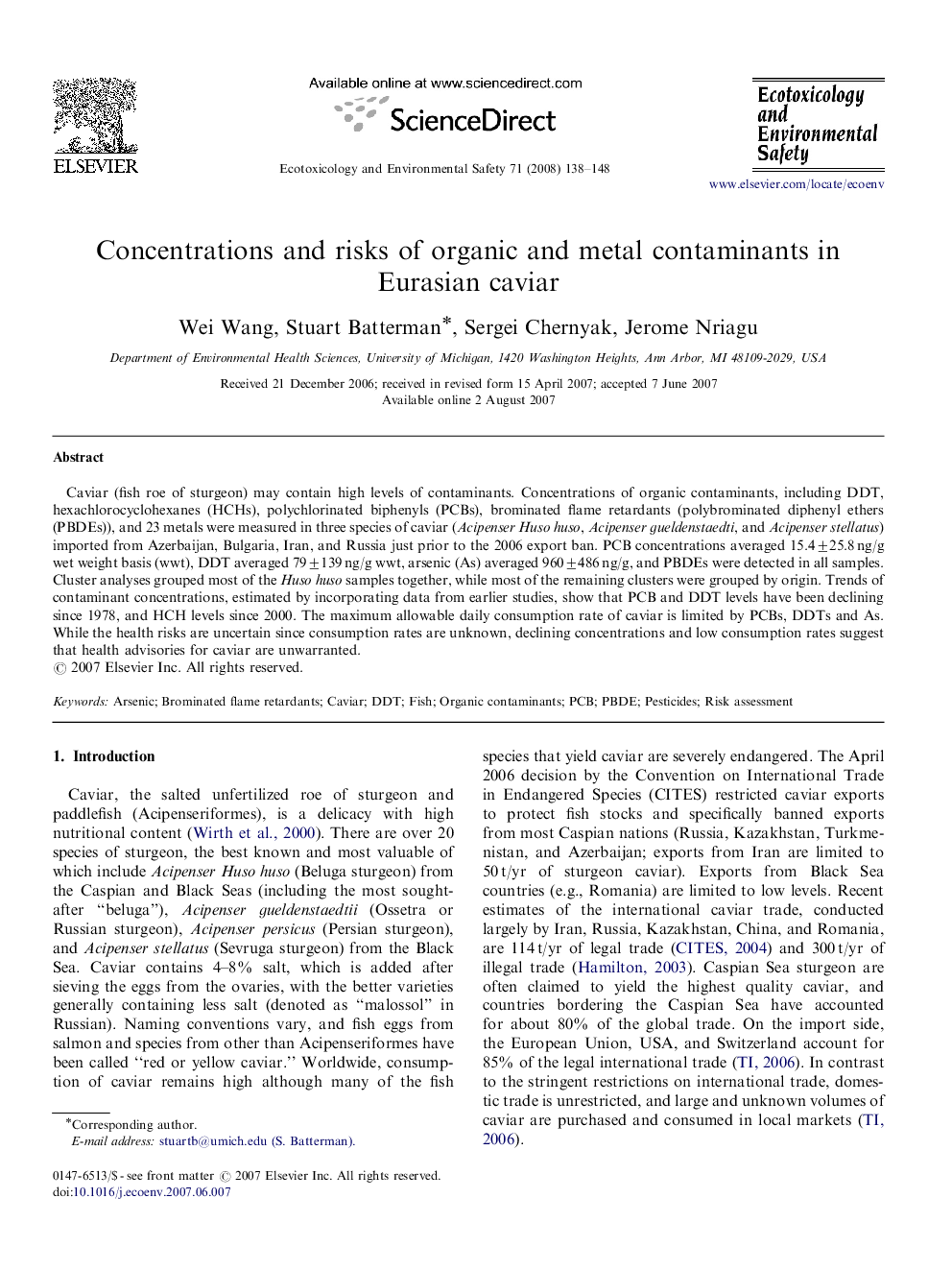| Article ID | Journal | Published Year | Pages | File Type |
|---|---|---|---|---|
| 4421865 | Ecotoxicology and Environmental Safety | 2008 | 11 Pages |
Caviar (fish roe of sturgeon) may contain high levels of contaminants. Concentrations of organic contaminants, including DDT, hexachlorocyclohexanes (HCHs), polychlorinated biphenyls (PCBs), brominated flame retardants (polybrominated diphenyl ethers (PBDEs)), and 23 metals were measured in three species of caviar (Acipenser Huso huso, Acipenser gueldenstaedti, and Acipenser stellatus) imported from Azerbaijan, Bulgaria, Iran, and Russia just prior to the 2006 export ban. PCB concentrations averaged 15.4±25.8 ng/g wet weight basis (wwt), DDT averaged 79±139 ng/g wwt, arsenic (As) averaged 960±486 ng/g, and PBDEs were detected in all samples. Cluster analyses grouped most of the Huso huso samples together, while most of the remaining clusters were grouped by origin. Trends of contaminant concentrations, estimated by incorporating data from earlier studies, show that PCB and DDT levels have been declining since 1978, and HCH levels since 2000. The maximum allowable daily consumption rate of caviar is limited by PCBs, DDTs and As. While the health risks are uncertain since consumption rates are unknown, declining concentrations and low consumption rates suggest that health advisories for caviar are unwarranted.
